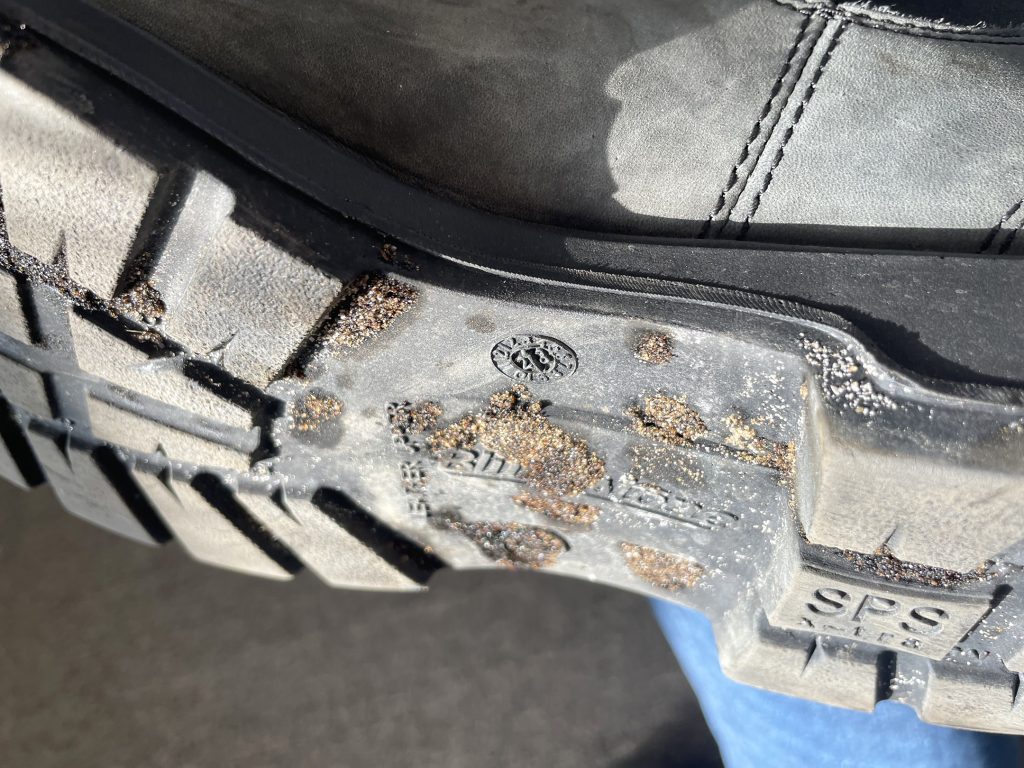
By Stephen Appezzato
MONMOUTH BEACH – Coagulated balls of oil and tar washed up on Monmouth Beach and some Long Branch beaches this week, leaving residents and environmentalists concerned. Officials do not yet know the source of the spillage.
According to Clean Ocean Action (COA), on Monday, several residents reported the instances to the state Department of Environmental Protection (DEP). The environmental group encouraged beachgoers to document and report future oil and tar ball findings to the DEP’s hotline at 877-WARN-DEP.
“Tar balls on the beach indicates a potential oil spill,” said COA executive director Cindy Zipf.
According to Zipf, these are a threat to marine life. They also make a black sticky mess on shoes and clothing.
Oil and tar balls are dark-colored objects ranging in size that are sticky or hard. Sometimes people notice them sticking to the bottom of their feet after visiting the beach. According to the National Oceanic and Atmospheric Administration (NOAA), they are often the result of offshore oil spills.
Zipf noted the balls found this week ranged from pea-size to golf ball-size, “which hopefully indicates a small spill.”
They can also be produced from natural seeps, geologic features on the earth’s surface and under the sea located above natural petroleum reservoirs. In these areas, oil slowly seeps from the reservoirs, entering the environment.
U.S. Rep. Frank Pallone (D-6) who visited Monmouth Beach Tuesday to announce a new phase of beach replenishment and dredging projects in Monmouth County, said he was “concerned about reports of oil and tar balls” on area coasts.
Pallone said he contacted the United States Environmental Protection Agency, as well as the state DEP and local officials to “ensure we find out the origin of the oil and address environmental concerns.”
“I’m ready to help deliver whatever resources are necessary to make sure our coast has what it needs to clean up the contamination,” he said.
When crude oil or heavier refined oil products float on the ocean surface, their physical characteristics change.
According to NOAA, within the first few hours of an aquatic oil leak, the liquid resembles a thin slick. The slick is then torn into smaller patches due to winds and waves, which disperse it over a wide area. A process of “weathering” occurs, wherein the appearance of the oil changes due to physical, chemical and biological processes.
At this stage the lighter components of the petroleum evaporate. With heavier oil products, the oil is mixed with ocean water and emulsifies, creating a thick, dark goo. This mixture is thicker and stickier than the original spilled product. Waves and wind continue to tear the emulsification into smaller bits, creating tar balls. Most tar balls are approximately the size of a coin, but larger balls exist.
According to NOAA, tar balls are resilient in the environment and can travel many miles.
“This used to happen all the time years ago, and folks still living in the area will remember that most everyone kept mineral spirits on the back stoop to rub the tar off” feet and shoes, Zipf said.
She noted that the one encouraging factor is that these incidents occur far less frequently than prior.
NOAA reports that occasional and brief contact with tar balls poses no threat to most people. However, those more sensitive to chemical products can have an allergic reaction from the substance, and the concern is greater for pets and wildlife.
“Foxes will likely try to lick the oil off (their fur) and birds will attempt to preen their feathers and feet,” Zipf said. Pet owners should check their furry companions carefully and remove oil from their fur so the animals do not lick it off.
Tar balls are usually removed from beaches by hand or cleaning machinery. In severe cases the top layer of beach sand may be removed.
Officials are expected to provide more details as the investigation into the source progresses.
The article originally appeared in the November 30 – December 6, 2023 print edition of The Two River Times.















